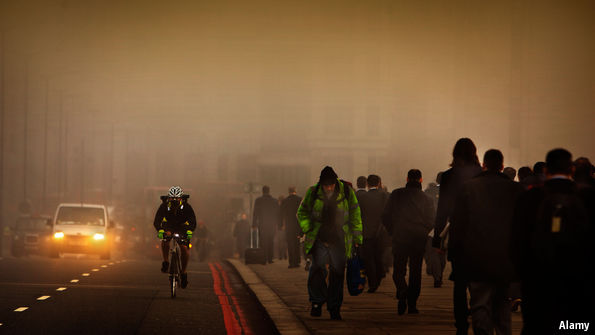The link between pollution and heart disease

WHY air pollution causes lung disease is obvious. Why it also causes heart disease is, though, a conundrum. One suggestion is that tiny particles of soot migrate through the lungs, into the bloodstream and thence to the walls of blood vessels, where they cause damage. Until now, this has remained hypothetical. But a study published in ACS Nano, by Mark Miller of Edinburgh University, suggests not only that it is correct, but also that those particles are specifically carried to parts of blood vessels where they will do maximum damage—the arterial plaques associated with cardiovascular disease.
One reason the particle-migration hypothesis has proved hard to confirm is that it is tricky to follow soot around the body. Soot is made of carbon, and that element, when finely divided and at low concentration, is difficult to isolate in biological material. Instead, Dr Miller and his colleagues used soot-sized particles of gold for their experiments. These are easy to detect, even at low concentrations, by means such as mass spectroscopy and Raman spectroscopy. Also, gold is chemically inert and therefore unlikely to be toxic. This is important, because…Continue reading
Source: Economist




